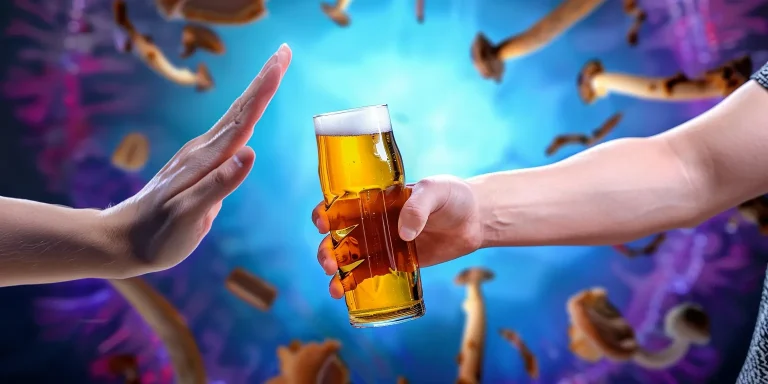On an otherwise unremarkable duty day in 1957, Army Sergeant James Stanley sat across from Dr. Van Murray Sim, his superior and the head of psychochemical research at the U.S. Army Chemical Corps Edgewood Arsenal facility in Maryland. Little did Stanley know that Sim had laced the innocuous-looking glass of water he was sipping with a then little-known psychedelic drug, lysergic acid diethylamide (LSD). What started as an ordinary day would quickly turn into a kaleidoscopic nightmare as Stanley succumbed to the effects of the potent hallucinogen.(1)

Stanley had just become an unwitting participant in Operation Delirium, one of several highly classified and secretive government mind control experiments, including MK-Ultra. He would spend the remainder of his day under the mind-bending effects of a massive dose of LSD, bombarded with asinine questions, nonsensical tasks, and seemingly insane requests. In one such incident, researchers had Stanley pick up and throw extremely heavy “iron bell” weights at a wall until he was unable to continue due to exhaustion. This event would mark one of the most grueling days of Stanley’s military service. This strange experiment aimed to discover what benefits the compound held for enhancing military interrogation techniques, brainwashing, and coercion.(1, 2, 3, 4)
Stanley would later testify that his experience irrevocably changed his life. In a New York Times interview, he stated, “I couldn’t get along with my family or co-workers or anyone else.” Even my children were afraid of me, and I’d always been close to my kids. I was afraid to go see the Army doctors for fear I would be thrown out of the Army.”(5)
This incident, and others surrounding government research programs using a range of psychoactive drugs, begs the questions: What in the world was the military doing with psychedelics? And why?
Keep Up with Psychedelic Trends
Don’t miss the latest psychedelic news, events, companies, and more.
We respect and protect your privacy. By subscribing your info will be subject to our privacy policy. Unsubscribe easily at any time
If you’re here, you likely know that psychedelics are a class of hallucinogenic substances known primarily for their ability to induce a profoundly altered state of consciousness, colloquially known as “tripping.” Psychedelics can also increase empathy, deepen your connection with the people you love, and even help reduce the severity of some mental illnesses. Perhaps most saliently to what the military was attempting to do, psychedelics also have the potential to leave one vulnerable and impressionable.(6)
The psychedelic family of drugs includes (LSD), psilocybin (AKA magic mushrooms), (DMT), Ayahuasca, Ibogaine, and mescaline. Other non-classical psychedelics include (MDMA), 2-CB, and though it’s not a “classical psychedelic,” ketamine. However, the military – and the government in general – was primarily focused on LSD in this era.(7, 8)
Beginning in the late 1940s and extending into the early 1970s, the United States government sponsored a series of research initiatives to discover new uses for psychedelics. Further, (and significantly more ethical) research would begin picking up steam decades later as scientists look for new ways to combat the world’s mental health epidemic. At the time, however, more sinister questions were being asked in these explorations into psychedelics’ potential use in war.(8, 9)
MK-Ultra’s Psychedelic Spymasters
One of the first known government forays into the world of psychedelics started with Project MK-Ultra. Conceived in the 1960s as a response to what the CIA believed were successful Soviet mind control experiments, MK-Ultra was designed to find chemicals that would allow the CIA and the U.S. to dominate the minds of their adversaries. The CIA enlisted several seemingly mad scientists to handle operations in the U.S., Canada, and other nations. Many experiments were conducted covertly at American and Canadian universities. While the most deranged projects were performed in U.S. prisons, asylums, and detention centers in countries like Japan, Germany, and the Philippines.(1, 2, 3, 4)
One particularly chilling example is detailed in declassified CIA files on a subproject of MK-Ultra, called the DERBY HAT experiment by the army. These tests involved dosing a suspected southeast Asian spy with six micrograms of LSD per pound of body weight. This dose was so high that it resulted in the subject going into shock and becoming semi-comatose. See an excerpt from the report.(4)
“Another gross violation of an individual’s fundamental rights occurred in September 1962 as part of the Army’s DERBY HAT tests in the Far East. A suspected Asian espionage agent was given 6 micrograms of LSD per kilogram of bodyweight. The administration of the drug was completed at 10:35 that morning: At 11:20, sweating became evident, his pulse became thready. He was placed in a supine position. He began groaning with expiration and became semicomatose.”
The same report details the next three (agonizing) hours of the subject’s experience. At one point, the investigators detail how the unfortunate soul had a “notably increased response to pain stimuli.” The report does not tell us exactly what that was, but we can only imagine that it was dehumanizing. It would be nearly eight and a half hours of hellish conditions before the subject finally began coming down from the drug (LSD). The investigators who wrote the above report pulled no punches when describing the Army and CIA’s actions as gross breaches of human rights and basic human dignity.(4)
Keep Up with Psychedelic Trends
Don’t miss the latest psychedelic news, events, companies, and more.
We respect and protect your privacy. By subscribing your info will be subject to our privacy policy. Unsubscribe easily at any time
Dr. Ewan Cameron and the CIA’s Covert Canadian Operations
One particularly troubling example comes from a CBC, Radio-Canada report from 1984. In their story, the CBC interviews Val Orlikow, an unknowing and unwilling victim of MK-Ultra. Orlikow, who suffered from postpartum depression, was referred to a psychiatrist in Montreal after the birth of her child in 1957. Little did she know this psychiatrist was part of the CIA’s clandestine mind control program in Canada. The operation, dubbed Project-68, was headed by Dr. Ewan Cameron, Chairman of Psychiatry at Mcgill University. Orlikow would undergo a procedure that Dr. Cameron called Psychic Driving. This technique involved numerous, high-powered sessions of electroshock therapy (ECT), followed by auditory “therapy.” However, auditory torture would have been more apt, as Dr. Cameron would force the patient to listen to thousands of repeating subliminal messages. Orlikow would state that she did not think there was any true objective, instead she believed Cameron was simply messing with her mind to see what would happen.(4, 10, 11)
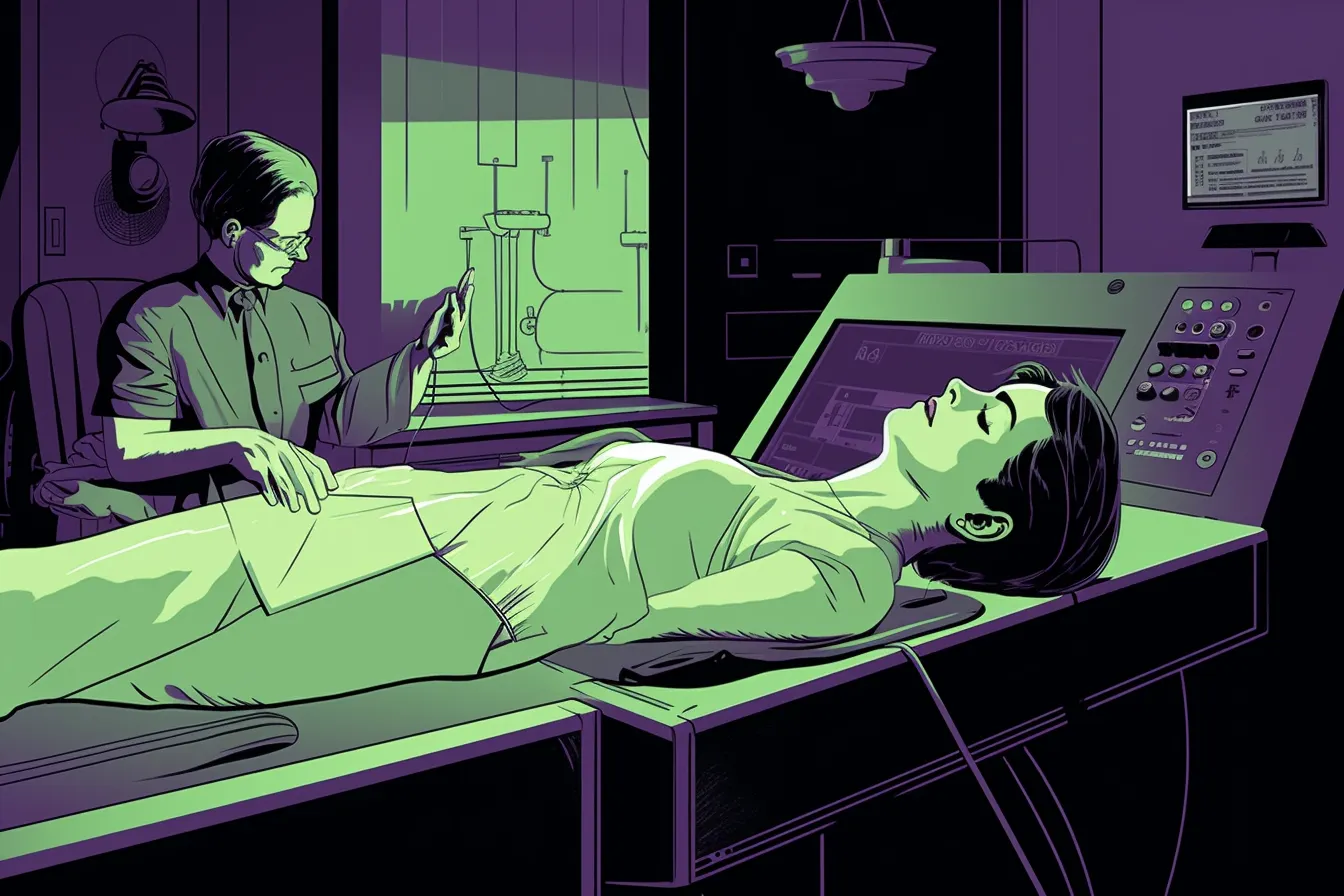
Patients were also often dosed with experimental and dangerous drugs like artane (a tranquilizer), anectine, curare (a powerful paralytic), bulbocapnine (which can cause catatonic states), and the often misused LSD-25.(4, 10, 11)
Orlikow would receive several of these, but her experience with LSD stuck with her. In her interview, she recounted having vivid hallucinations, feeling fearful, and developing a belief that she was trapped in a cage. This sounds like a classic “bad trip,” which was likely brought on, at least partially, by the ECT therapy she was also subjected to. Orlikow recounted that she believed she was exposed to high doses of LSD at least 14 times, sometimes on consecutive days. She would state that she eventually started to “hide like a child,” attempting to find safety in her hospital bathroom.(4, 10, 11)
The repercussions of what Cameron forced her to experience would follow her for the rest of her life. Once an avid reader, Orlikow recounted that she lost the ability to read for more than a few minutes at a time and that writing more than a handful of sentences or a letter became nearly impossible. Orlikow also became easily freighted, reportedly jumping at even the smallest sounds, like a fork striking a plate or a hard knock on the door. She also spent the rest of her life on medication for anxiety, depression, and more, before eventually passing away from cancer in 1990.(4, 10, 11)
Sydney Gottlieb Brings LSD to America
“This methodology came from Gottlieb’s belief that the test subject’s mind must first be broken down before being molded into a more useful tool for spycraft.(1, 2, 3, 4)“
Sydney Gottlieb was the head of several projects within MK-Ultra, earning him the nickname “Poisoner in Chief.” Of the many projects headed by Gottlieb, some of his most extreme research projects subjected participants (willing and otherwise) to electroshock therapy and incredibly high doses of LSD. This methodology came from Gottlieb’s belief that the test subject’s mind must first be broken down before being molded into a more useful tool for spycraft.(1, 2, 3, 4)
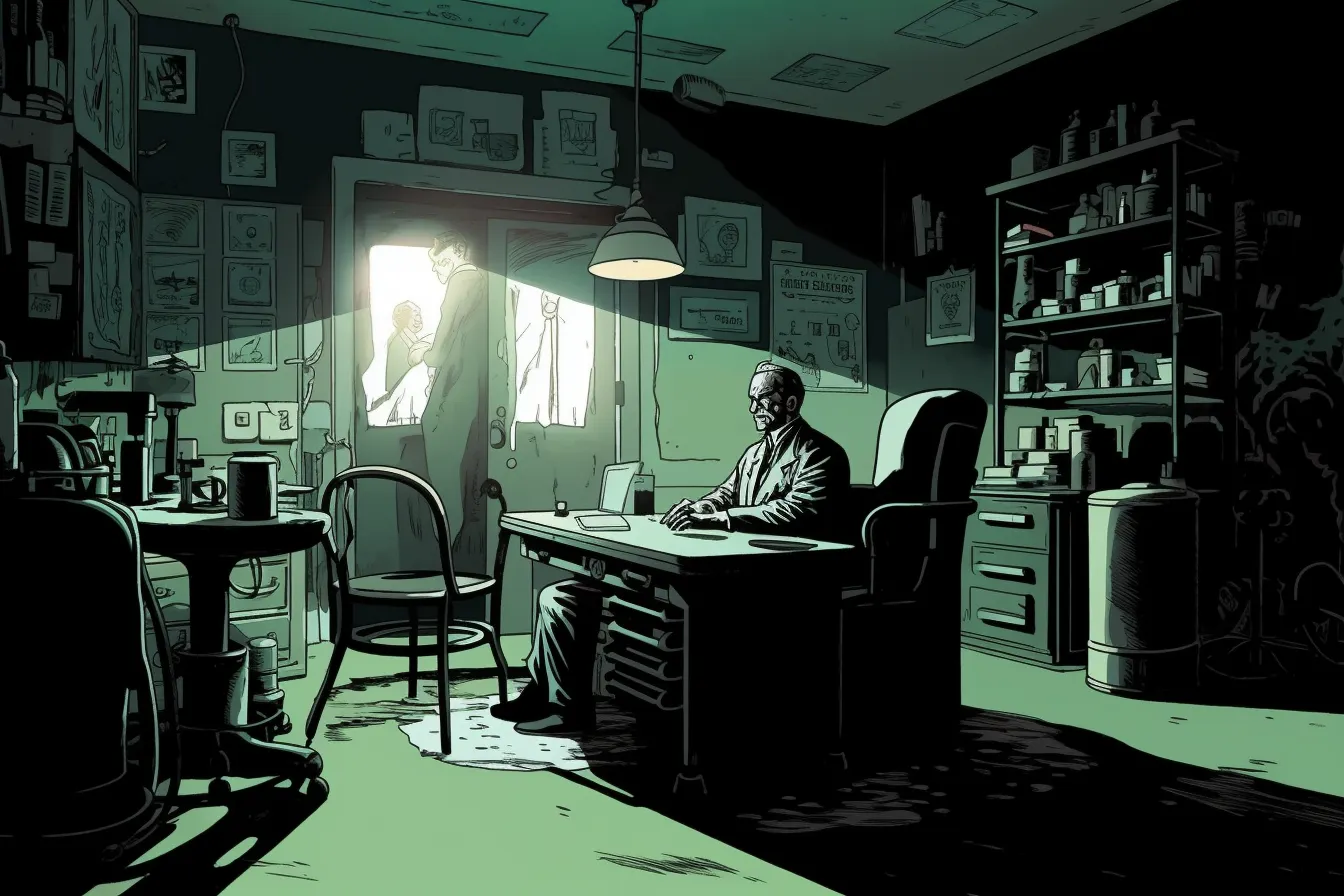
While Gottlieb’s actions were unethical, his contribution to the psychedelic movement is also indisputable. Beginning in the early 1950s, Gottlieb used $240,000.00 in CIA discretionary funds to purchase very close to the totality of the world’s supply of LSD. Importing it into the U.S. to fuel his strange experiments. This vast quantity of LSD would eventually find its way out of the CIA’s labs and into the hands of the burgeoning American counterculture movement.(1, 2, 3, 4)
One of Gottlieb’s psychedelic participants, Robert Hunter, would become a famous founding member of and lyricist for the Grateful Dead – one of the most culturally significant bands in the psychedelic community. The American poet and psychedelic proponent Allen Ginsberg would also get his first taste of psychedelics, specifically LSD, from Gottlieb.(1, 2, 3, 4)
Ironically, a drug originally used for government mind control experiments would become the beating heart of the 1960s-1970s era of free love, peace, and the anti-war movement. It could even be argued that Gottlieb is directly responsible for releasing LSD into the mainstream, as some participants in his less extreme experiments would pilfer the powerful psychedelic for recreational use.(1, 2, 3, 4)
James Ketchum’s Search for Non-Lethal Psychedelic Weapons
Sydney Gottlieb may be the world’s most infamous psychedelic spymaster. However, there was another notable, if not quite as sinister, military researcher who was experimenting with psychedelic drugs at the secretive Edgewood Arsenal facility.(1, 2, 3, 4, 12)

Dr. James S. Ketchum was a U.S. Army psychiatrist serving in the 1960s. Where Gottlieb approached psychedelics as a tool for mind control, Ketchum took a different route. He was searching for a non-lethal way to hinder America’s adversaries. Motivated by the belief that psychedelics could be used to confuse enemy soldiers, Ketchum believed this was a more humane way to render enemy combatants ineffective, ultimately saving lives.(13, 14, 15)
Ketchum would run a small research lab at the U.S. Army Chemical Corps’ Edgewood Arsenal in Maryland. Over the course of his decade stewarding the project, Ketchum would administer LSD and other psychedelics to thousands of U.S. military personnel.(13, 14, 15)
According to Ketchum’s self-published memoir, many of the soldiers could be found in states of mild bewilderment, euphoria, or trances. They were often tasked with answering ordinary questions or completing tasks ranging from something as mundane as cleaning their living facilities to difficult obstacle courses.(13, 14, 15)
In testimony provided to the New York Times for his 2019 obituary, Ketchum would maintain his stance that using psychedelics to incapacitate enemy soldiers was still morally and ethically superior to using conventional weapons.(13)
“The idea of chemical weapons is still preferable to me, depending on how they are used, as a way of neutralizing an enemy. They are still more humane than conventional weapons currently being used if the public can ever get over its psychological block of being afraid of chemical weapons.”
Ketchum’s intention may have been to reduce harm, but his methods were questionable at best. Of thousands of service members exposed to the drug, an unknowable number would likely have had adverse reactions, such as extreme paranoia and experiencing panic attacks. Some of the participants in Ketchum’s experiments would join a class action lawsuit that would eventually force the Canadian government to disclose further information on its participation with the CIA, MK-Ultra, and related experiments using psychedelic drugs.(13, 14, 15)
Van Murray Sim’s Diabolical Experiments with VX Nerve Gas and LSD
Machiavellian Dr. Van Murray Sim was the founder and chief architect of the Army’s psychochemical warfare research facility at Edgewood. Sim’s research touched on everything from using LSD for enhanced interrogation to human testing of the deadly VX nerve agent (which has never been used in combat as it would violate international law and basic human rights). Sim himself was among the first individuals to be administered a small dose of VX. The highly dangerous chemical reportedly caused him to have a seizure and become incoherent for several hours.(4, 15, 16)
Sim would go so far as to self-administer both synthesized crystalline psilocybin and LSD throughout his tenure as head of the facility. His reach extended well past the confines of the Edgewood Arsenal through his partnership with the New York State Psychiatric Institute. Working in concert with chief psychiatrist Dr. Sidney Malitz, Sim would have samples of psychedelic drugs and other chemical compounds given to patients and volunteers.(17)
Sim’s and Malitz’s reckless and morally bankrupt use of psychedelics is known to have led to at least one confirmed death. In 1953, the research team gave patient Harold Blauer a massive dose of the psychedelic compound mescaline. This dose, several magnitudes higher than a recreational or therapeutic dose, was injected directly into his bloodstream, resulting in Blauer having an extreme reaction. Blauer violently convulsed before eventually succumbing to shock and death. This event is the only known death by overdose of mescaline.(17)
Unfortunately, Blauer’s death would be in vain, as testing continued without pause. Three months after the incident occurred, the U.S. Army permitted Sim to begin tests using LSD in enhanced interrogation. These tests would occur at the Edgewood facility itself instead of nearby psychiatric hospitals. Sim would enlist several other researchers for these experiments, including Joseph Bertino.(17)
Bertino was a U.S. Army Medical Corps member stationed at Edgewood in the mid-1950s. In one experiment, Bertino recounts that one participant “saw horrible green-eyed monsters,” while another man with a predisposition for paranoia became psychotic and violent, needing to be restrained.(17)
These extreme reactions to LSD, a drug that in recent years has been known to be relatively safe, were likely due to the massive doses given to research subjects. Sim and his team administered as much as 16ug (micrograms) per kilogram of body weight. To put that into context, a 200lb (90kg) man would have received a dose of 1451ug. This is nearly six times the amount (250ug) LSD’s inventor Albert Hoffman accidentally dosed himself with.(18)
For the average person, a 200ug dose of LSD would be incredibly potent. A typical experience on a 200ug dose would be quite powerful, with vivid visual hallucinations, massive changes to the appreciation of sounds, and possibly even ego dissolution (the loss of the sense of self) for those inexperienced with the drug. One can only imagine the sheer overwhelming power of a 1451ug LSD trip.(18)
Tragically, Dr. Frank Olson, one of the poor souls subjected to Sim’s LSD experiments, died. This death would mark one of the sparse handful known to be associated with LSD, which is considered to be non-toxic when used at recreational doses. According to a 2001 Washington Post article, Olson seemingly committed suicide a few days after he was surreptitiously dosed with 70ug of LSD at Deep Creek Lodge in Western Maryland. His family stated that his body was found “broken and bloodied” on the pavement outside of the Statler Hotel. He appeared to have plunged to his death after leaping from the 10th-floor room where he had been taken to be monitored by government personnel.(19)
Many other victims of MK-Ultra carried lifelong scars from the experiments. Some would even develop PTSD, experiencing flashbacks of the events. For example, Sergeant James Stanley, who we detailed above, reported waking up from nightmares so intense he would violently react to his wife and children if approached.(20)
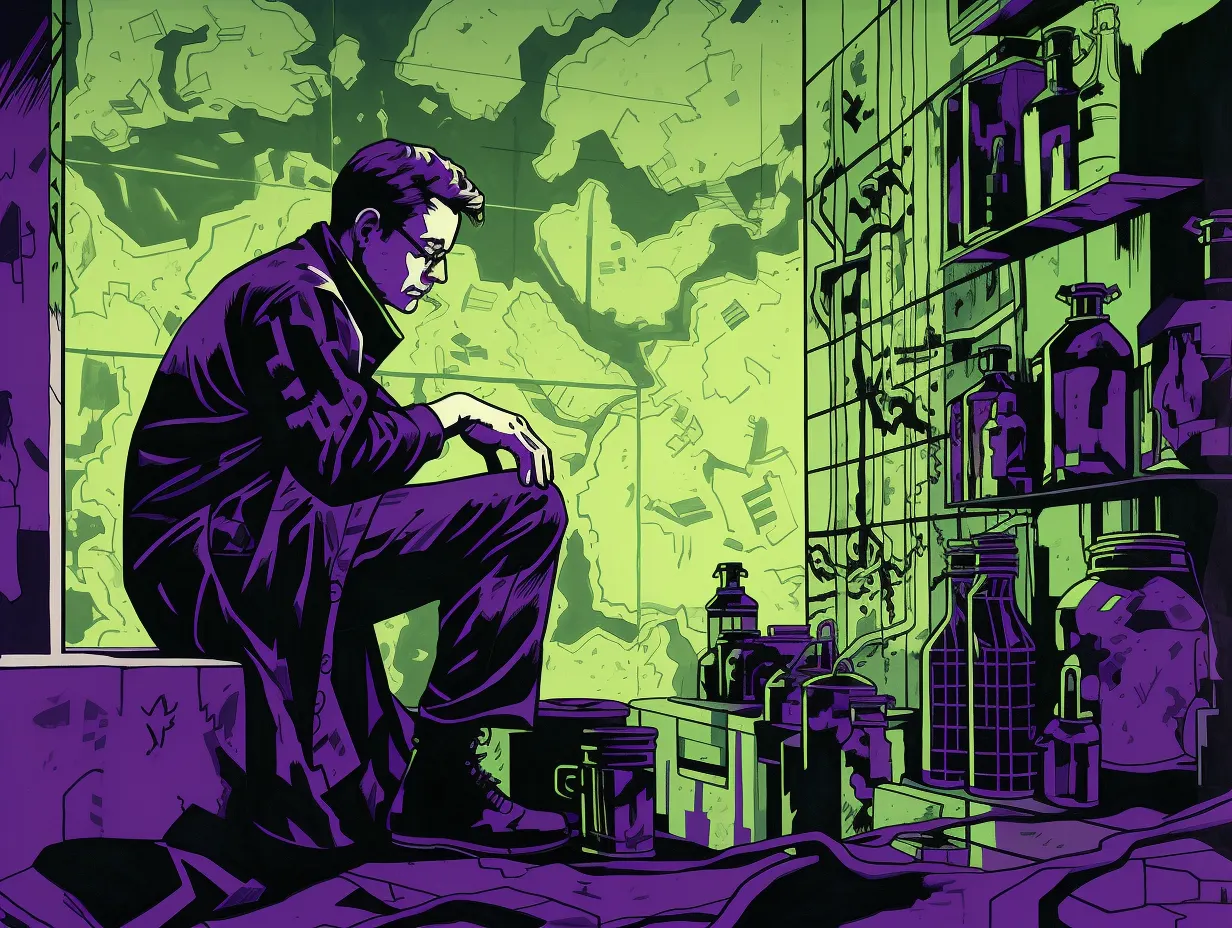
Eventually, Sim’s research, along with many of the other known government programs studying the weaponization of psychedelics, would be brought to an end. Some test subjects and their families, such as that of Dr. Frank Olson (the only known death in the LSD project), would receive compensation from Congress. Unfortunately, Olson’s family was one of the few to receive any restitution or acknowledgment. President Gerald Ford visited Olson’s family with then CIA Director William Colby, who formally apologized.(4, 21)
Other unwilling participants, like Army Sergeant James Stanley, would bring their quest for justice and compensation all the way to the U.S. Supreme Court. Unfortunately, the Supreme Court denied Stanley the equity he deserved. In 1987 the Supreme Court decided in a 5-4 vote to dismiss Stanley’s case. The Court based its decision on the 1950 case Feres vs. the United States, which determined a service member could not sue the U.S. Government for events that occurred while they were on active duty.(22)
Unfortunately, we will never know the true number of victims who suffered due to project MK-Ultra. According to an investigative report filed for the Senate Select Committee for Intelligence and Human Resources, the CIA destroyed most of the MK-Ultra records in 1973. Making it all but impossible to quantify the sheer amount of suffering that men like Sidney Gottlieb inflicted on people around the globe.(4)
Psychedelics Misused for Mind Control
Secretive government and military projects like MK-Ultra and Operation Delirium weren’t just morally and ethically unsound, they also had a long-lasting negative impact on how the public perceived psychedelics. When psychedelic researchers and proponents like Aldous Huxley, Alan Watts, Terence McKenna, and others began espousing the benefits of psychedelics in the late 1960s and early 1970s, they were rapidly confronted with waves of government propaganda designed to demonize LSD, specifically. Yet studies show that psychedelics, including LSD, have “very high safety rates” at therapeutic doses. In other words, when used properly and safely.(23)
By misusing psychedelics for mind-control experiments, the government created an arsenal of ready-to-use misinformation pieces. These actions are reprehensible, even more so when considering that modern medicine has shown us that these chemicals can make someone more vulnerable and open-minded. Individuals such as President Richard Nixon would leverage the results from some of these highly flawed projects as proof that psychedelics were dangerous and needed to be outlawed during his push to create the Controlled Substances Act. Due to the disturbing nature of experiments like those conducted by Sidney Gottlieb and Van Murray Sim, the public was easily convinced that psychedelic drugs were dangerous and that anyone who used them must be deranged.
This anti-drug propaganda continued to shape the public perception of psychedelics well into the modern era. However, things are beginning to change, with government and private researchers again studying the potential power of psychedelics. Only this time, their potential to heal vs. harm is being explored as scientists search for new treatments for PTSD, treatment-resistant depression, and more. Drugs like LSD, psilocybin, and MDMA, once tools for mind control and interrogation, could potentially save the lives of soldiers and military personnel who would have been used as the playthings of mad scientists like Ketchum, Gottlieb, and Sim. As this series continues, we will explore the potential that psychedelics hold to be transformed from weapons of warfare to (possible) tools of peace and instruments of healing.(24)
Sources

1. Kinzer, S. (2020). Poisoner in chief: Sidney Gottlieb and the Cia search for Mind Control. St. Martin’s Griffin, an imprint of St. Martin’s Publishing Group.
2. Ross, C. A., & Ross, C. A. (2006). The C.I.A. Doctors: Human Rights Violations by American psychiatrists. Manitou Communications.
3. Thomas, G. (1989). Journey into madness: The true story of secret Cia mind control and sanctioned medical abuse. Bantam Books.
4. Select Committee on Intelligence . (1977, August 3). Reports | Intelligence Committee. Retrieved March 17, 2023, from https://www.intelligence.senate.gov/publications/reports?destination=sites%2Fdefault%2Ffiles%2Fhearings%2F95mkultra.pdf&ved=2ahukewjtpzw8uzbtahwdut4khsoccji4chawmal6baggeae&usg=aovvaw0l1knvlhsr9rpter7xf29a
5. The New York Times. (1987, June 30). Ruling reopens wound for bitter ex-soldier. The New York Times. Retrieved March 17, 2023, from https://www.nytimes.com/1987/06/30/us/ruling-reopens-wound-for-bitter-ex-soldier.html
6. Holze, F., Vizeli, P., Ley, L., Müller, F., Dolder, P., Stocker, M., Duthaler, U., Varghese, N., Eckert, A., Borgwardt, S., & Liechti, M. E. (2020, October 15). Acute dose-dependent effects of lysergic acid diethylamide in a double-blind placebo-controlled study in healthy subjects. Nature News. Retrieved February 27, 2023, from https://www.nature.com/articles/s41386-020-00883-6#citeas
7. Vargas, M. V., Meyer, R., Avanes, A. A., Rus, M., & Olson, D. E. (2021, September 6). Psychedelics and other psychoplastogens for treating mental illness. Frontiers. Retrieved February 27, 2023, from https://www.frontiersin.org/articles/10.3389/fpsyt.2021.727117/full
8. Mason, N. L., Kuypers, K. P. C., Reckweg, J. T., Müller, F., Tse, D. H. Y., Da Rios, B., Toennes, S. W., Stiers, P., Feilding, A., & Ramaekers, J. G. (2021, April 8). Spontaneous and deliberate creative cognition during and after Psilocybin Exposure. Nature News. Retrieved February 27, 2023, from https://www.nature.com/articles/s41398-021-01335-5
9. Kettner, H., Gandy, S., Haijen, E. C. H. M., & Carhart-Harris, R. L. (2019, December 16). From egoism to ecoism: Psychedelics increase nature relatedness in a state-mediated and context-dependent manner. International journal of environmental research and public health. Retrieved February 27, 2023, from https://www.ncbi.nlm.nih.gov/pmc/articles/PMC6949937/
10. YouTube. (2017, December 15). CIA’s secret brainwashing experiment: Former patients sue U.S. government (1984) – the fifth estate. YouTube. Retrieved March 17, 2023, from https://www.youtube.com/watch?v=vOjMQT5dvN8
11. Blatchford, E., Bright, S., & Engel, L. (2020, September 5). Tripping over the other: Could psychedelics increase empathy? AKJournals. Retrieved February 27, 2023, from https://akjournals.com/view/journals/2054/4/3/article-p163.xml
12. 20144 hallucinogens. CAMH. (n.d.). Retrieved February 27, 2023, from https://www.camh.ca/en/health-info/mental-illness-and-addiction-index/hallucinogens
13. Robert. (2019, June 3). James Ketchum, who conducted LSD experiments on soldiers, dies at 87. The New York Times. Retrieved February 27, 2023, from https://www.nytimes.com/2019/06/03/obituaries/james-ketchum-dead.html
14. Khatchadourian, R. (2012, December 10). Operation delirium. The New Yorker. Retrieved February 27, 2023, from https://www.newyorker.com/magazine/2012/12/17/operation-delirium
15. Central Intelligence Agency. (n.d.). Project MK-ULTRA – Intellipedia Doc ID: 6613524. Central Intelligence Agency. Retrieved February 27, 2023, from https://www.cia.gov/readingroom/document/06760269
16. Kimura, K. K., McNamara, B. P., & Van Sim. (1960, July). U.S. Army Chemical Research and Development Laboratories, Technical Report, Intravenous Administration of VX in Man. Retrieved March 17, 2023, from https://www.documentcloud.org/documents/547489-van-murray-sim-vx-report.html
17. Central Intelligence Agency. Clinical Research Laboratory Technical Report. Retrieved February 28, 2023, from https://i2.cdn.turner.com/cnn/2012/images/02/15/human.test.subjects.-.edgewood.ketchum.lsd.study.pdf
18. Holze, F., Vizeli, P., Ley, L., Müller, F., Dolder, P., Stocker, M., Duthaler, U., Varghese, N., Eckert, A., Borgwardt, S., & Liechti, M. E. (2020, October 15). Acute dose-dependent effects of lysergic acid diethylamide in a double-blind placebo-controlled study in healthy subjects. Nature News. Retrieved February 27, 2023, from https://www.nature.com/articles/s41386-020-00883-6#citeas
19. Gup, T. (2001, December 16). The coldest. The Washington Post. Retrieved March 17, 2023, from https://www.washingtonpost.com/archive/lifestyle/magazine/2001/12/16/the-coldest/83f56312-8cca-481f-af17-5d8eb0356612/
20. The New York Times. (1987, June 30). Ruling reopens wound for bitter ex-soldier. The New York Times. Retrieved March 17, 2023, from https://www.nytimes.com/1987/06/30/us/ruling-reopens-wound-for-bitter-ex-soldier.html
21. The New York Times. (1975, July 22). Family in LSD case gets Ford apology. The New York Times. Retrieved February 27, 2023, from https://www.nytimes.com/1975/07/22/archives/family-in-lsd-case-gets-ford-apology-family-in-lsd-death-case-gets.html
22. Feres v. United States, 340 U.S. 135 (1950). Justia Law. (n.d.). Retrieved February 27, 2023, from https://supreme.justia.com/cases/federal/us/340/135/#:~:text=U.S.%20Supreme%20Court&text=The%20United%20States%20is%20not,othe
23. Medication-assisted psychotherapy for PTSD – Veterans Affairs. (n.d.). Retrieved February 28, 2023, from https://www.ptsd.va.gov/publications/rq_docs/V30N3.pdf
24. Phase 3 trial program: MDMA-Assisted therapy for PTSD – Multidisciplinary Association for Psychedelic Studies. MAPS. (2021, November 16). Retrieved February 27, 2023, from https://maps.org/mdma/ptsd/phase3/
This material is not intended as a replacement or substitute for any legal or medical advice. Always consult a medical professional about your health needs. Psychedelics are widely illegal in the United States, and readers should always be informed about local, state, and federal regulations regarding psychedelics or other drugs.

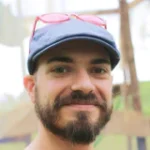 David Connell
David Connell